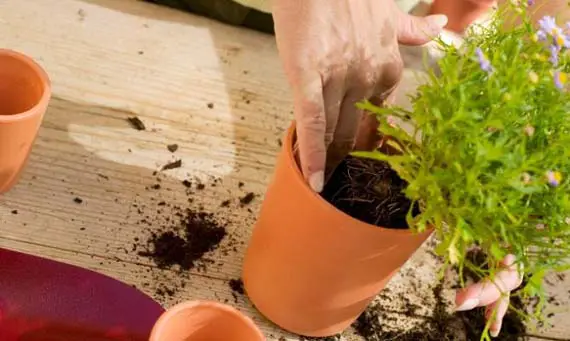
We were recently talking about characteristics of a good substrate for growing vegetables in pot. As we are in a time of changes in the flowerpot, we are going to see the different types of substrate that we can use for our new autumn crops.
As we grow in pots, we must enrich your soilsince it is scarce and soon our plants absorb its nutrients. We can fill our pots with two basic mixtures: 50% substrate and 50% compost or 70% substrate and 30% worm castings. But what types of substrate are there on the market and which is the most suitable for our pots?
For the land to be fertile it must be porous. This axiom is fundamental for the choice of the substrate.
A good substrate must be light, porous, nutritious and stable.
The roots have to be able to develop easily. If the soil is compact and does not have enough air pockets, the plant will develop fewer roots, therefore, it will absorb less water and fewer nutrients.
On the other hand, organic soils are alive and the small microorganisms that live in them need oxygen to live. With a compact or waterlogged substrate, these organisms, which are very beneficial for plant growth, begin to die.
If we achieve this balance of porous soil and moisture, we will not need to add any chemical fertilizers to our vegetables.
It is important to read the components of the substrate that we are buying. The most typical universal soil and substrate preparations sold on the market contain the following elements:
- Peat: Partially decomposed remains of the “Sphagnum” moss and constitutes the main component of most universal substrates.
- Sedge fiber: Ancient, partially decomposed remains of sedge, stems, and grasses.
- Coconut fiber: Composed basically of recycled coconut bark.
- Vermiculite: Made from micaceous rock heated to 1100ºC. It has a golden foil look and is very light.
- Perlite: Made from volcanic rock, crushed, sieved and raised to a temperature of 980ºC. It has the appearance of small light white balls.
- Limestone elements: They constitute a source of calcium that is usually added to peat to counteract its acidic pH.
Well, the substrate that we buy must have peat, perlite and limestone elements. It would also be convenient if the mixture does not incorporate it (as it usually happens in most brands) to add a scoop of vermiculite. We must avoid coconut or sedge fiber because they absorb a lot of water and in the case of pots, the earth can become flooded.
We will know that the mix we have bought is of good quality because the soil will have a loose appearance and will contain pearlite. If the soil contains many stems and wood chips, the quality is inferior.
Before buying the soil, you have to take a good look at the composition because there are cheaper bags due to the low content of perlite and / or vermiculite (which are more expensive than peat) and both are the most important element to give air to the substrate.
More information – the substrate
Source: urbanicultor.es
